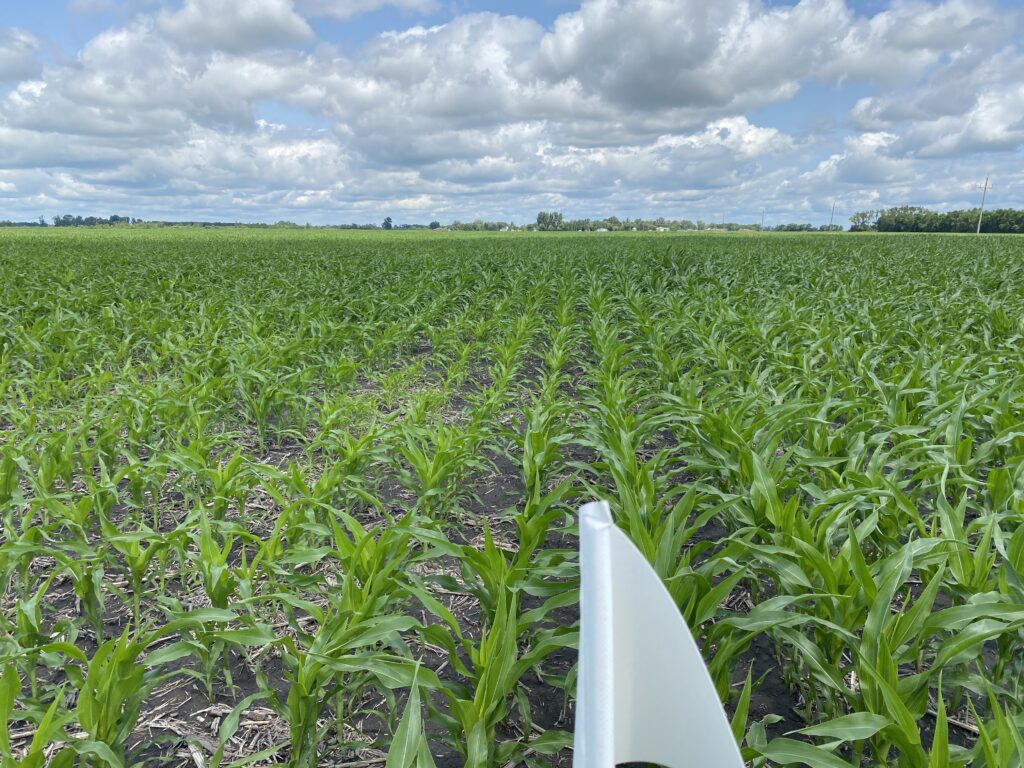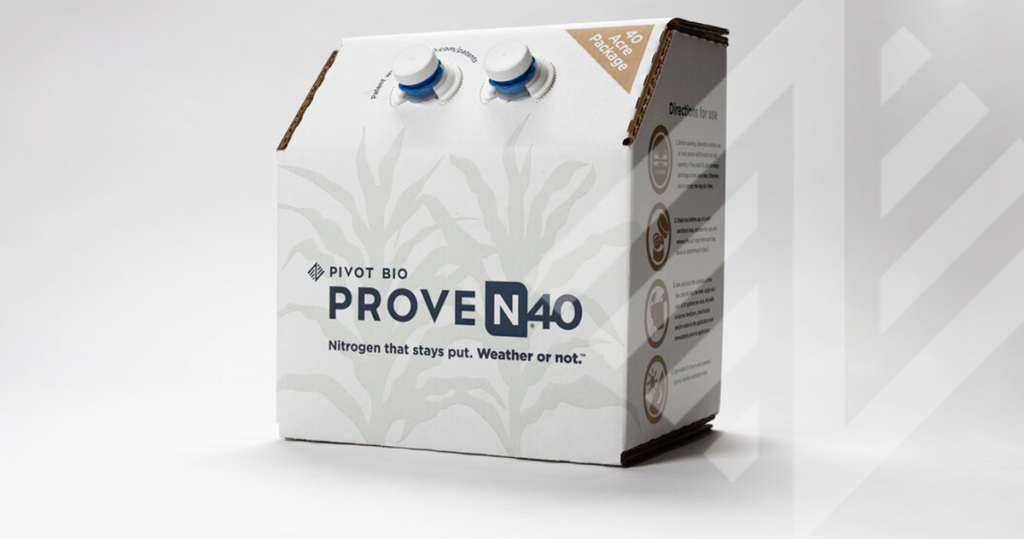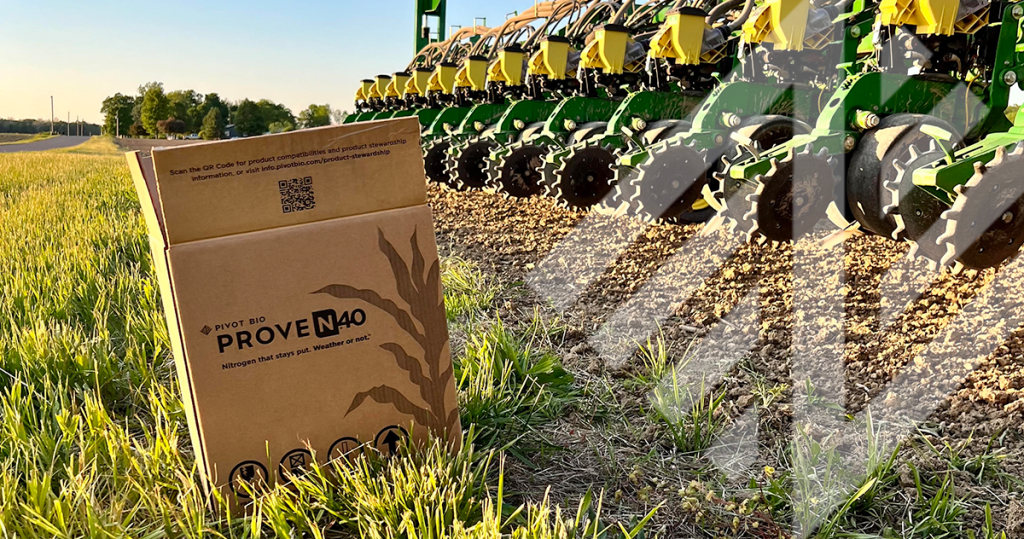PROVEN 40 Results from the 2024 Growing Season in the Northern Plains

From the Northern Plains Commercial Agronomy Team
The 2024 growing season will go into the agricultural history books as a very favorable year for crop production in the Far Northern Plains – even a record best year for many farm operations when strictly evaluating crop yields.
Of course, there will be exceptions – especially as you travel into western North Dakota and eastern Montana, where seasonal rainfall fell below average. However, when you look at central and eastern North Dakota, the spring and summer bordered on too much rain, before another dry and warm finish after mid-August.
Despite these drier conditions and above average temperatures during the last two months of the growing season, crops flourished – including spring wheat, barley, sugar beets, soybeans and corn. It was very surprising to most agriculturists that nitrogen didn’t play more of role in determining crop yields – especially in fields that produced yields that were 15-25% or more above average. Nitrogen loss was predicted to be strong during the spring and early summer months, and there were not ample widespread opportunities for side-dress nitrogen applications due to the wet weather. By the end of the season, many predicted above average mineralization to feed the strong yield levels.

The above picture comes from Iowa State University Extension and highlights the fact that most of eastern North Dakota and western Minnesota did indeed benefit from increased nitrogen mineralization rates during the middle of the summer – often providing between 0.5 to a full 1.0 lb of N/ac per day (other timelines from this website revealed similar performance during the entire months of July and August). If we take 60 days at an estimated average of 0.67 lbs N/ac per day, it equates to 40 lbs N/ac mineralized in just those two months alone during the 2024 growing season!
Trial Yield Data
Pivot Bio’s 2024 farmer scale strip trials within the region entailed working closely with the farm manager to implement two nitrogen zones within the field: a grower standard practice “Full N” zone and a “Reduced N” zone, which varied from 20-45 lbs/ac less nitrogen depending on field parameters (soil type, variability, farm manager comfort level, and irrigation potential).
At planting, farm managers implemented a split-planter arrangement with PROVEN 40 treated seed on one half of the planter, and the other half implementing the same hybrid, but untreated. The result was four treatments: PROVEN 40 microbes at Full N, an untreated check (UTC) at Full N, PROVEN 40 microbes at a Reduced Rate of nitrogen, and a UTC at the same Reduced Rate of nitrogen.
Throughout 20 locations in west central Minnesota and eastern North Dakota, corn treated with PROVEN 40 had par performance (-0.4 bu/ac) with an average reduction of 38.5 pounds of synthetic nitrogen when compared to the Full N and untreated. Most locations were within parity yield (+/-3 bu/ac), revealing that PROVEN 40 consistently replaces synthetic nitrogen. Six locations saw an increase in yield above the 3 bu/ac benchmark, most likely from significant early season N loss due to heavy rainfall. On the other hand, five locations saw the UTC perform better than the 3 bu/ac benchmark.

Many farm managers like to utilize PROVEN 40 in addition to their full nitrogen program. In these 15 comparisons in west central Minnesota and eastern North Dakota, corn treated with PROVEN 40 averaged 6.5 bu/ac better than the UTC. Eight of the 15 locations showed greater than 3 bu/ac additional yield, confirming significant N losses did occur during the early part of the growing season. The remaining seven locations had yields even to only a couple bu/ac better, indicating nitrogen was most likely not the most limiting factor and more nitrogen did not bring additional yield in these locations.
Data Summary and Best Management Practices
At first glance, the data may seem to lack in providing a significant booming first impression, but we must keep in mind Pivot Bio’s value guarantee to the customer – replace bulky inefficient salty synthetic nitrogen with PROVEN 40 microbes in corn production (keeping input costs flat) and maintain yields at minimum when compared to Full N treatments. If we analyze these results with that in mind, there are many positive take home messages to build our confidence:
- Most fields (15 out of 20, or 75%) showed at minimum a corn yield parity (+/- 3.0 bu/ac) with Pivot Bio PROVEN 40 at reduced nitrogen rates over Full N untreated checks – a fairly strong win rate!
- In comparisons where PROVEN 40 and the untreated check were compared at Full N rates, PROVEN 40 did add significant additional yield of +6.5 bu/ac, indicating that nitrogen loss was high early in the season (probably more of a seasonal response than expected long term normal performance data).
- 2024 was a season where higher than average daily mineralization rates occurred during July and August. The wet June, July, and early August most likely moved a lot of synthetic nitrogen, but mineralized nitrogen made up much of the difference, and more.
- The majority of field data supports the implementation of a nitrogen reduction to capture the maximum economic ROI using Pivot Bio PROVEN 40. Some fields may see the best ROI at reduced nitrogen rates in the 20-35 lbs/ac nitrogen range if they are prone to very high nitrogen losses.
- Fields with high variability regarding soil type, water holding capacity, soil salinity, topography, base fertility levels, and yield potential normally show stronger responses to microbial nitrogen from Pivot Bio.
- Fields prone to losing more nitrogen than average (high water table, sandy soils, over saturated soil conditions, and/or flooding susceptible) are also candidates to benefit from microbial nitrogen.
- Pivot Bio agronomists recommended that nitrogen reductions come from large pre-plant urea or anhydrous applications with all other fertility additions held constant – Phosphorous, Potash, Sulfur, Zinc, etc.
- Pivot Bio products are designed to maximize nitrogen availability for yields, minimize nitrogen loss to the environment, and maximize ROI to the customer. The data may not reveal full achievement of all these goals in all situations, but the majority of the years in the majority of fields, Pivot Bio products will perform equal to or better than synthetic nitrogen.
- Why do Pivot Bio microbes perform better than native “wild-type” microbes? Simply put, Pivot Bio’s gene-edit on the microbes to obtain more consistent nitrogen fixation, nitrogen excretion, and stress tolerance to more reliably perform for added nitrogen efficiency.
- Lastly, nitrogen is very unpredictable – it is highly likely growers and consultants have and will continue to experience inconsistent synthetic nitrogen performance from year to year and field to field. Recent studies (here and here) are showing synthetic nitrogen loss in the 50% plus range in replicated environments.
Today’s farmers do an excellent job of minimizing crop production risk with rotating of crops, rotation of pesticides, and seeding genetically diverse varieties and hybrids. Now, we have an additional tool in place for managing risk around synthetic nitrogen performance as well.
Contact your Pivot Bio rep to learn more!


